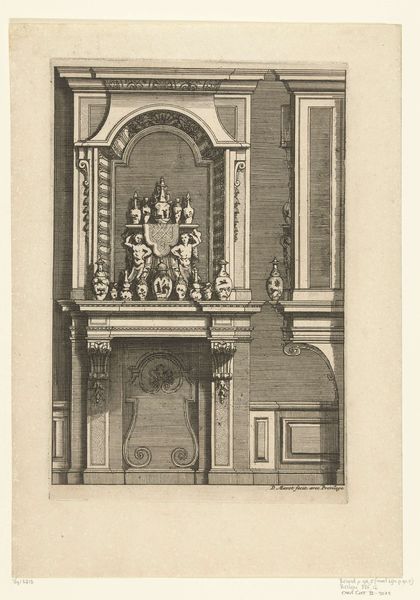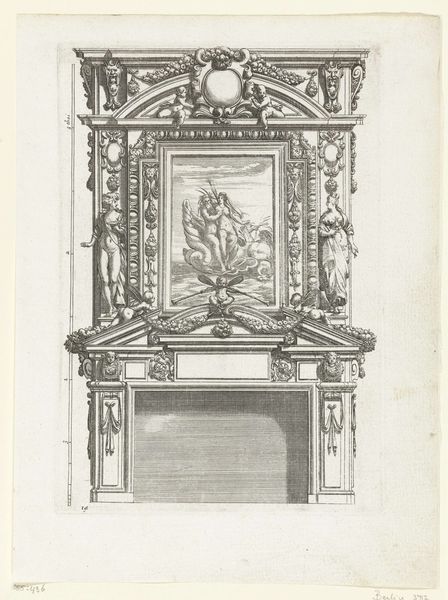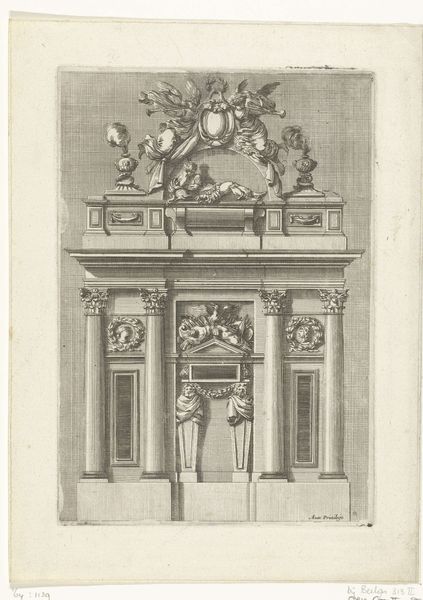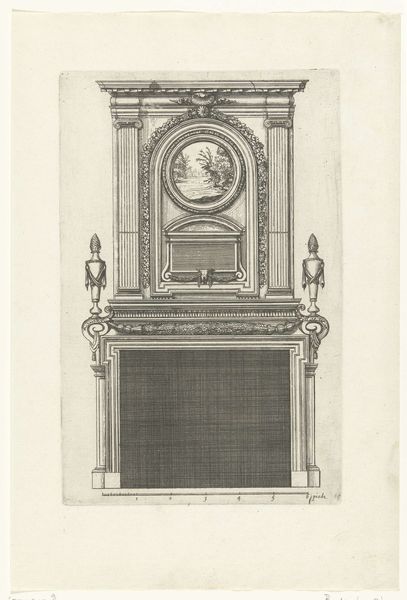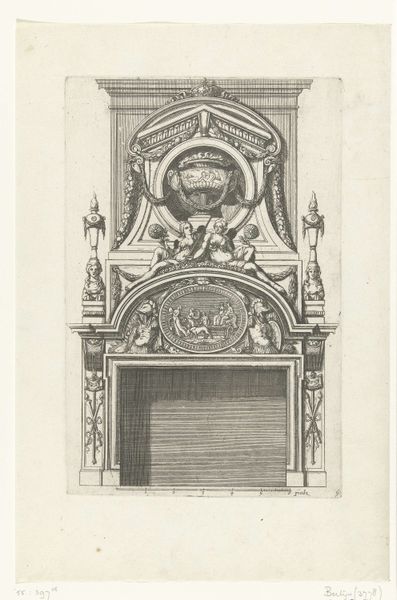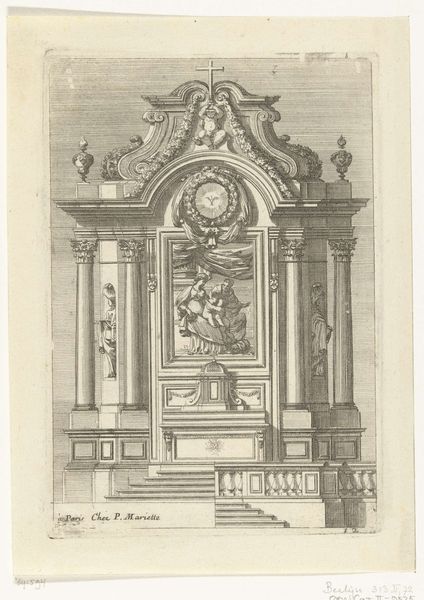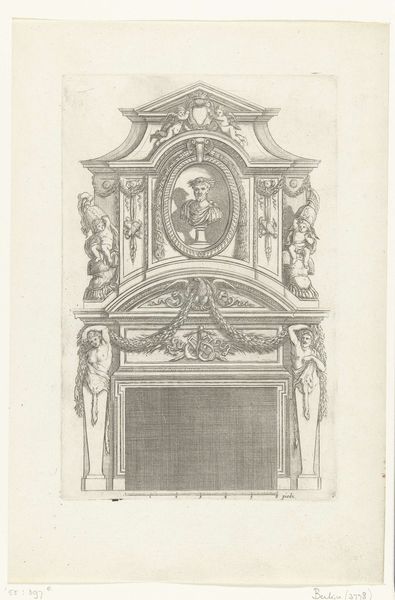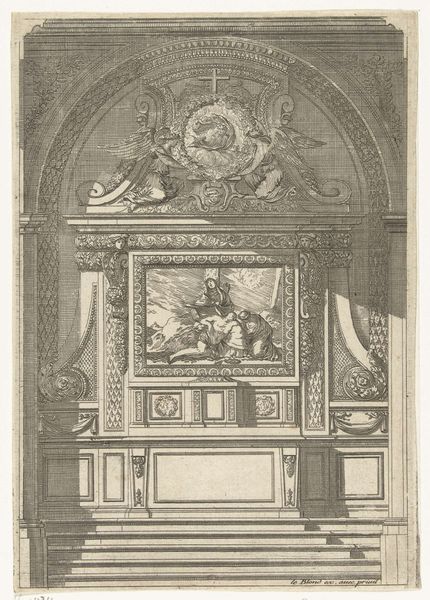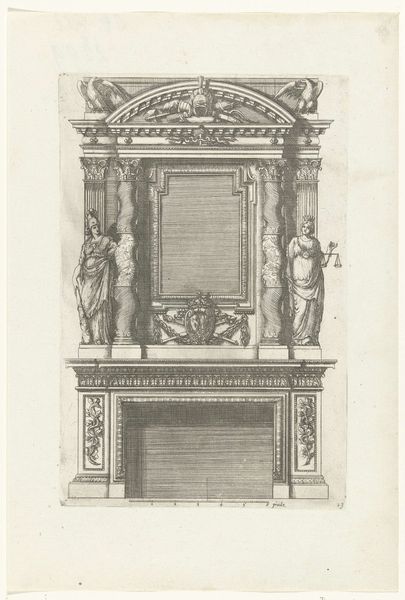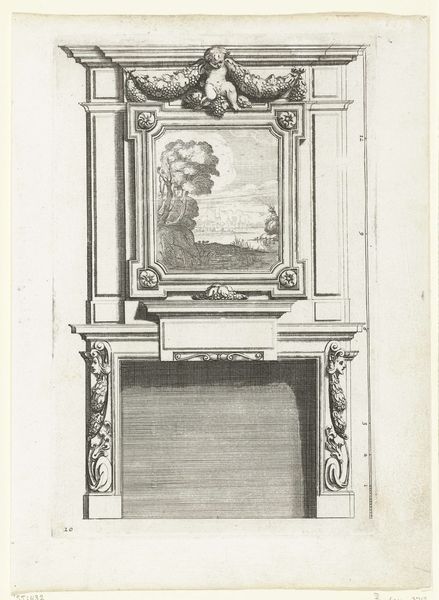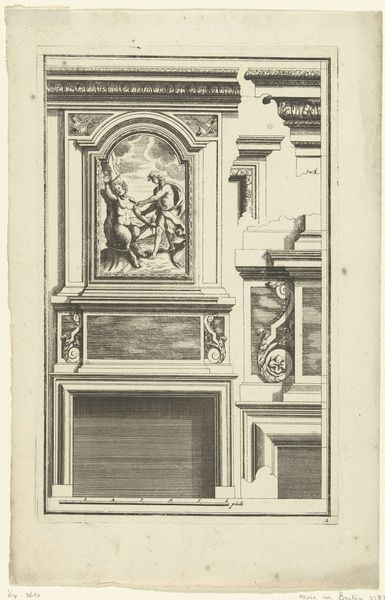
drawing, print, engraving, architecture
#
drawing
# print
#
form
#
11_renaissance
#
geometric
#
line
#
engraving
#
architecture
Dimensions: height 246 mm, width 182 mm
Copyright: Rijks Museum: Open Domain
This is a 16th-century print by Wendel Dietterlin, depicting a grand fireplace with two fire dogs. The image is made through etching, a printmaking technique where lines are incised into a metal plate using acid. Here, we can see the etched lines creating intricate details of the fireplace. Notice the ornate carvings, classical motifs, and the fire dogs themselves. This level of detail wasn't just about aesthetics. In the 1500s, fireplaces like this were status symbols. Owning one meant you had access to resources, skilled labor, and the wealth to heat your home in style. The etcher would have worked meticulously, transferring the design onto the metal plate, carefully etching each line, and then printing the image. It highlights the labor involved in producing such imagery, and the implied labor required to create the object in real life. By understanding the processes and techniques involved, we get a deeper appreciation of the social and economic contexts of the artwork. It's not just a pretty picture; it's a glimpse into a world of wealth, labor, and social hierarchy.
Comments
No comments
Be the first to comment and join the conversation on the ultimate creative platform.


